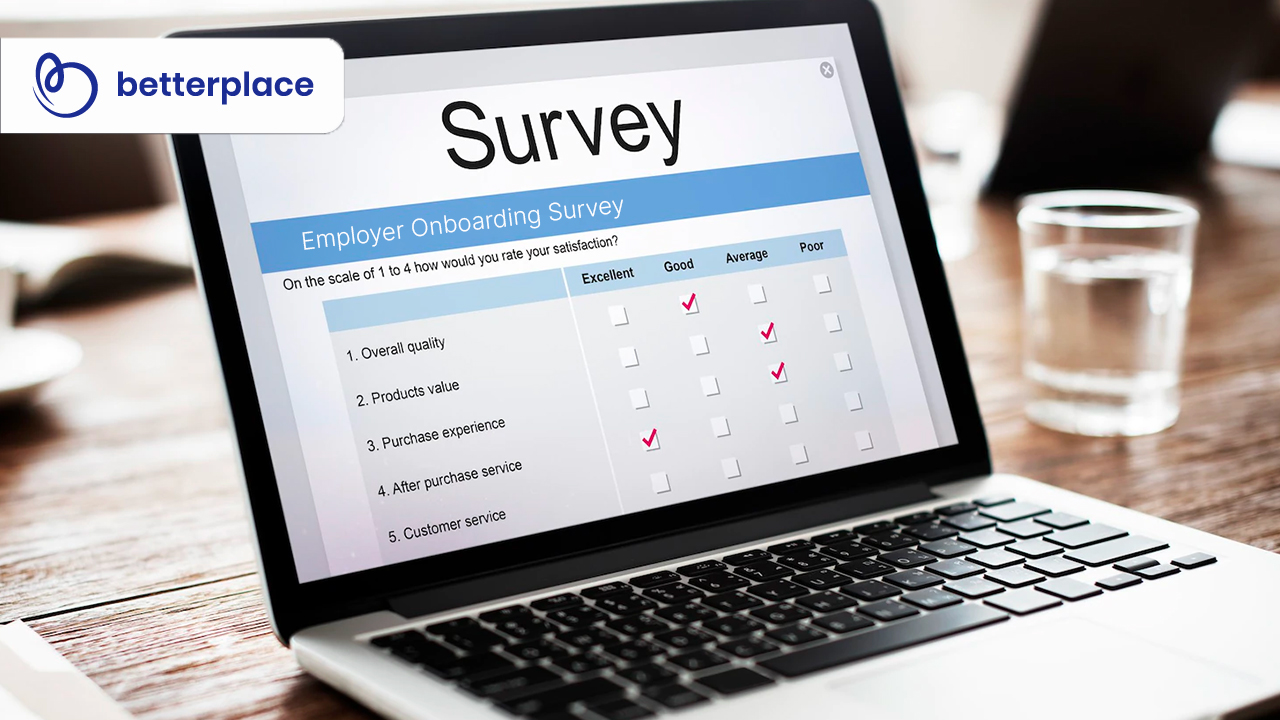4 Things You Should Remember When Creating Your New Employee Onboarding Survey
Solicit insightful feedback from your new hires about your onboarding process by following these 4 best practices for onboarding survey.
A crucial element that goes into running a successful organisation is how new hires are onboarded. It’s critical that you get employee onboarding spot-on because it can affect everything, from company revenues to employee productivity and retention.
But how do you measure the effectiveness of your company’s onboarding program? One way to do it is through employee onboarding surveys. In this blog post, let’s explore some of the best standard practices for putting together a flawless employee onboarding survey.


Don’t Take Too Long To Announce The Survey
More individuals can partake in your new employee onboarding survey as long as you ensure that it’s publicised as early as possible. The ideal time to make an announcement is about 7 days before its launch. But announcing 2-3 days before is also good enough.
Announcing the survey early offers staff members adequate time to compile responses and submit them. In doing so, their inputs can be recorded and organised in your data sets immediately.
As a rule of thumb, you must ensure that everyone is aware of survey link. You can include them in your internal newsletters or emails with clear instructions about the deadlines, any forms that they need to fill out, and the survey submission link.
The Survey Should Be Launched At The Right Time
Although you should mention the deadline for the survey submission, it’s important that you realise that not everyone might complete it right away. In fact, most employees might not complete the survey within the first week of launching it.
For them, completing the survey is optional. They may not neglect their work; moreover, they need the extra motivation and time (if they have it) to complete the survey.
Induct your new hires, let them settle in, and then launch your survey. That way, you will give them enough time to recall important announcements, and answer survey questions correctly.
For instance, if the announcement is something recent (and big), such as a merger or an acquisition, you should first see to it that everyone within the organisation is completely aware of the change and that they have all the information about what’s going on within the company.
Loop In Your New Hires When Creating The Survey
Employees, new and old, must be made a part of survey creation process. You could achieve that by setting up discussions around the nature of the survey and what specific questions that should be included. In fact, you should encourage them to come up with more ideas and suggestions so that the survey is big on impact and insight.
When building out the survey, if there’s anything major, you should ensure that all those who are involved get a copy of the questionnaire (and the appropriate responses). One key detail to remember is that if the onboarding survey isn’t being conducted (created) by the HR team, but someone like a manager or a team lead, they should consult individuals and departments and gather feedback about specific areas, such as employee performance, productivity, company culture, and onboarding.
The Survey Structure Should Be Relevant
It’s important to make sure that the questions being asked in the onboarding survey is to the point and relevant. Additionally, the questions (and responses) should be short and easy to understand; the onboarding survey shouldn’t take more than two minutes to complete, with participants not exceeding 10-20 seconds on each survey question.
Another important point is the language that you will use to build the survey. As a rule of thumb, keep it basic, simple, and easy to understand. Leave out technical wordings and jargon as much as possible because everyone should be able to comprehend the objective of the survey and the questions being asked.
This is important because not everyone may have had the same experiences. For instance, a field sales professional may not have had the same onboarding experience as someone from, say, the leadership group. Onbaording should be all-inclusive regardless of employees’ roles within the organisation, and the survey should be comprehensible.
Onboarding surveys have one purpose (and one purpose only) — gather feedback about the onboarding experience from your new employees. From the survey insights, you will be able to create an effective onboarding program from scratch, or tweak what you already have. Furthermore, onboarding surveys will uncover any problems that your new hires are experiencing within the organisation.
Subscribe For Newsletter
Subscribe to get the latest news and happenings around recruitment space


